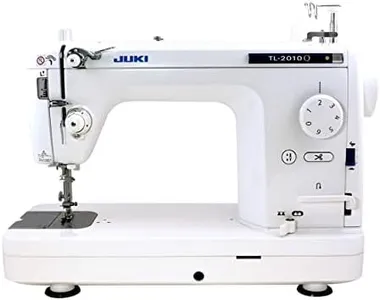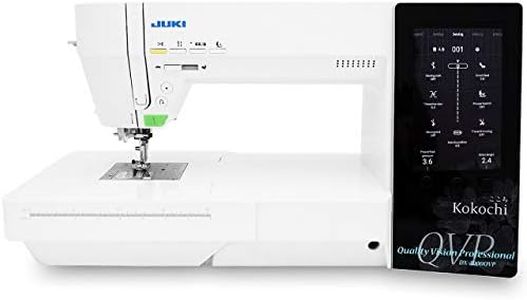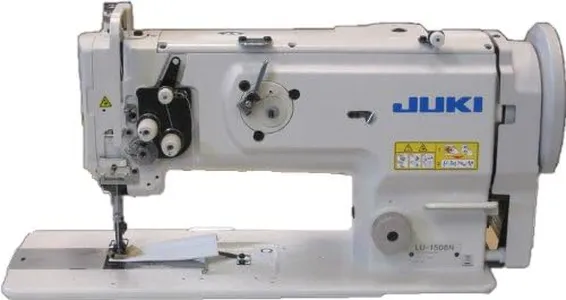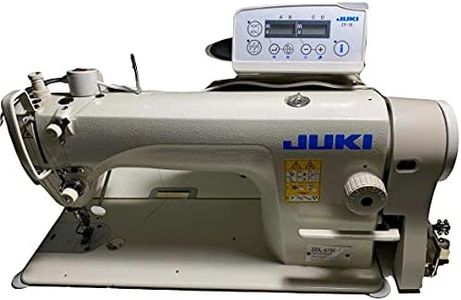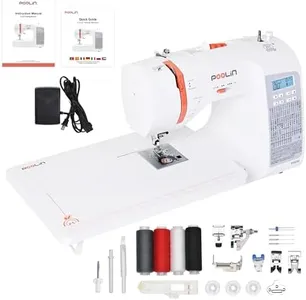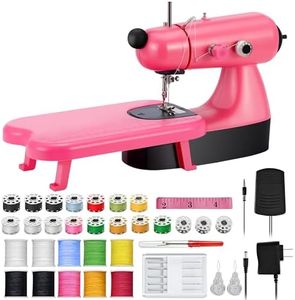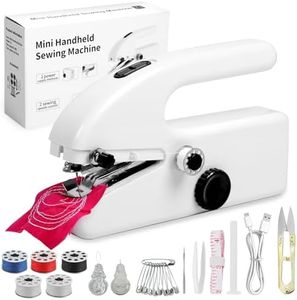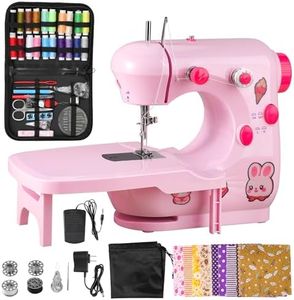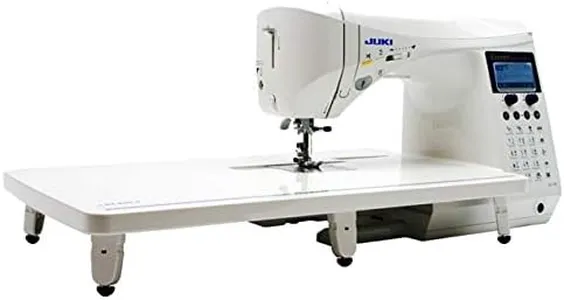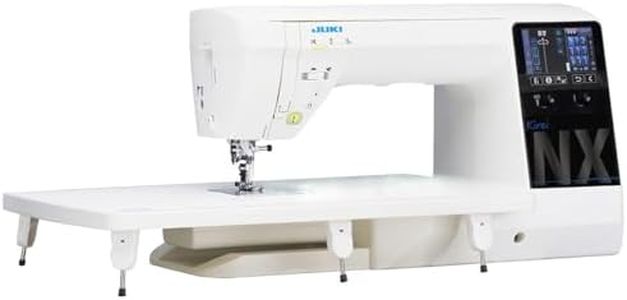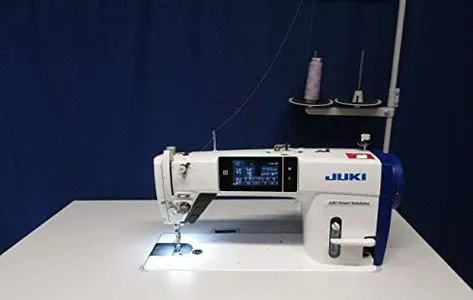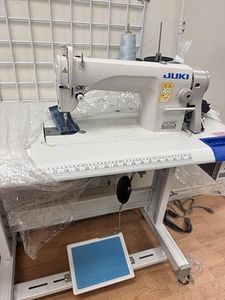10 Best Juki Sewing Machines 2025 in the United States
Our technology thoroughly searches through the online shopping world, reviewing hundreds of sites. We then process and analyze this information, updating in real-time to bring you the latest top-rated products. This way, you always get the best and most current options available.

Our Top Picks
Winner
Juki TL-2010Q High Speed Sewing & Quilting Machine With Free Bonus Pack
Most important from
297 reviews
The Juki TL-2010Q High Speed Sewing & Quilting Machine is a robust and reliable choice for both sewing enthusiasts and quilters. One of its standout features is its high-speed stitching capability, which can significantly reduce the time needed for large projects. This makes it particularly appealing to professional sewers and serious hobbyists who need efficiency without compromising quality.
The machine's automatic features, such as needle threading and thread cutting, add convenience and ease of use, helping to streamline your sewing process. Additionally, the machine is built with durability in mind, featuring a solid construction that can withstand heavy usage over time.
However, the Juki TL-2010Q might fall short for those looking for a wide variety of built-in stitches, as it doesn't offer as many options compared to some other models. It is more focused on straight stitching, which is ideal for quilting but less versatile for other types of sewing projects. The motor power is another strong point, providing consistent and reliable performance, even with thicker fabrics. While the machine is user-friendly, beginners might find it slightly overwhelming due to its professional-grade features. In summary, the Juki TL-2010Q is a high-performance machine with excellent durability and speed, best suited for experienced users who require a dependable and efficient sewing and quilting machine.
Most important from
297 reviews
Juki DX-4000QVP Kokochi 12" Arm Professional Quality Sewing Machine
Most important from
11 reviews
The Juki DX-4000QVP Kokochi sewing machine is designed for those looking to take their sewing skills to a professional level. One of its standout features is the variety of stitch options available, allowing users to choose from a wide range of built-in stitches for various sewing projects. This flexibility caters well to both beginners and more experienced sewers who enjoy creating intricate designs. Additionally, the machine boasts automatic features, which enhance usability by simplifying tasks like threading and stitch selection, making it a great choice for those who may not be very tech-savvy.
In terms of motor power, the Juki DX-4000QVP offers strong performance, enabling it to handle thick fabrics and multiple layers with ease. The build quality is notably robust, contributing to its durability, which is important for long-term investment.
However, there are a few considerations to keep in mind. Weighing in at 33 pounds, the machine can be somewhat cumbersome to transport, which might be a drawback for users who prefer a more portable option. Additionally, while the features are impressive, the initial learning curve could be a bit steep for complete beginners, especially if they are unfamiliar with advanced sewing machines.
For those in the market for a reliable sewing machine, particularly quilters and those tackling complex projects, the Juki DX-4000QVP Kokochi provides a solid combination of features and performance. Just be prepared for some initial learning and the need for a dedicated workspace due to its size and weight.
Most important from
11 reviews
Juki LU-1508NS Industrial Walking Foot Sewing Machine, Vertical Axis Hook, Servo Motor
Most important from
3 reviews
The Juki LU-1508NS Industrial Walking Foot Sewing Machine is designed for heavy-duty use, making it suitable for professional and industrial applications. One of its significant strengths is its high sewing speed, capable of 2500 stitches per minute, which enhances productivity for large projects. The machine also features a max stitch length of 9mm, providing versatility for various fabric types and thicknesses. The unit is powered by a quiet servo motor, which ensures consistent performance without excessive noise, a plus for continuous use environments.
The dimensions of the machine (48 x 20 x 48 inches) suggest that it is quite sizable, which might be a consideration for those with limited space. Additionally, the machine uses a 135 X 17 needle and has an alternating vertical movement range of 2.5 to 6.5mm, which aids in dealing with thicker materials and multiple fabric layers effortlessly. However, it is worth noting that this sewing machine may lack some of the automatic features and built-in stitch options found in more advanced or user-friendly models. This could make it less appealing to beginners or those looking for a machine with a wide variety of decorative stitches.
The build quality and durability are top-notch, as expected from Juki, making it a reliable long-term investment for those requiring robust performance. Ease of use might be subjective; experienced users will likely find it straightforward, but novices might face a learning curve. This machine is ideal for businesses or professionals in need of a machine that can handle demanding tasks, but it might be overkill for casual or occasional users.
